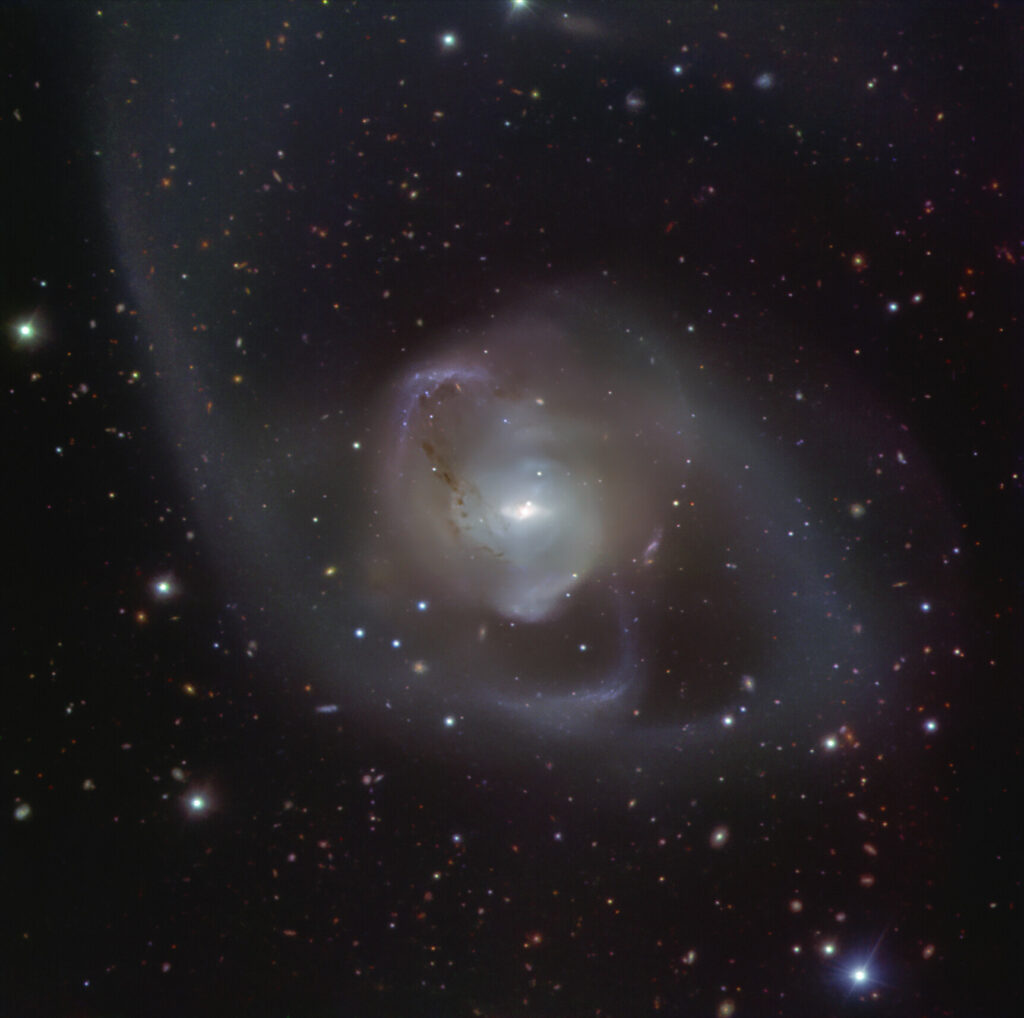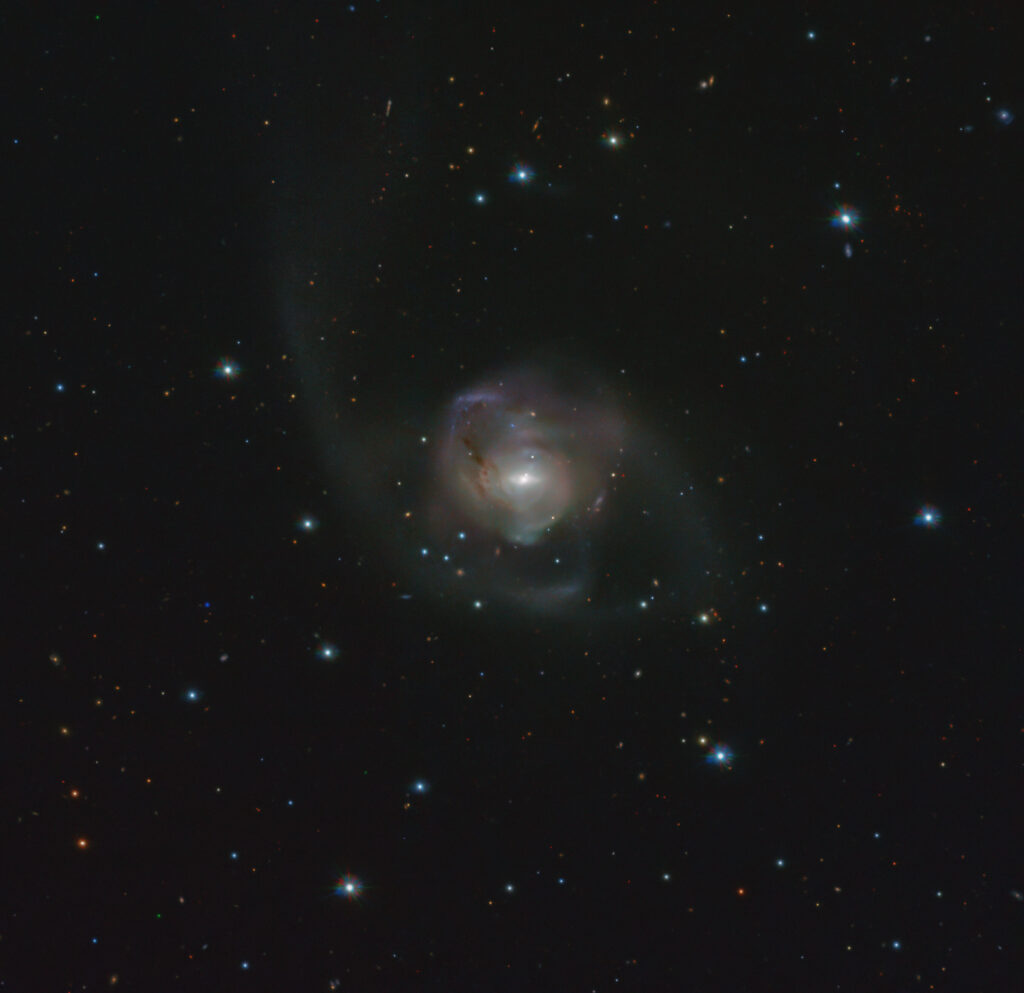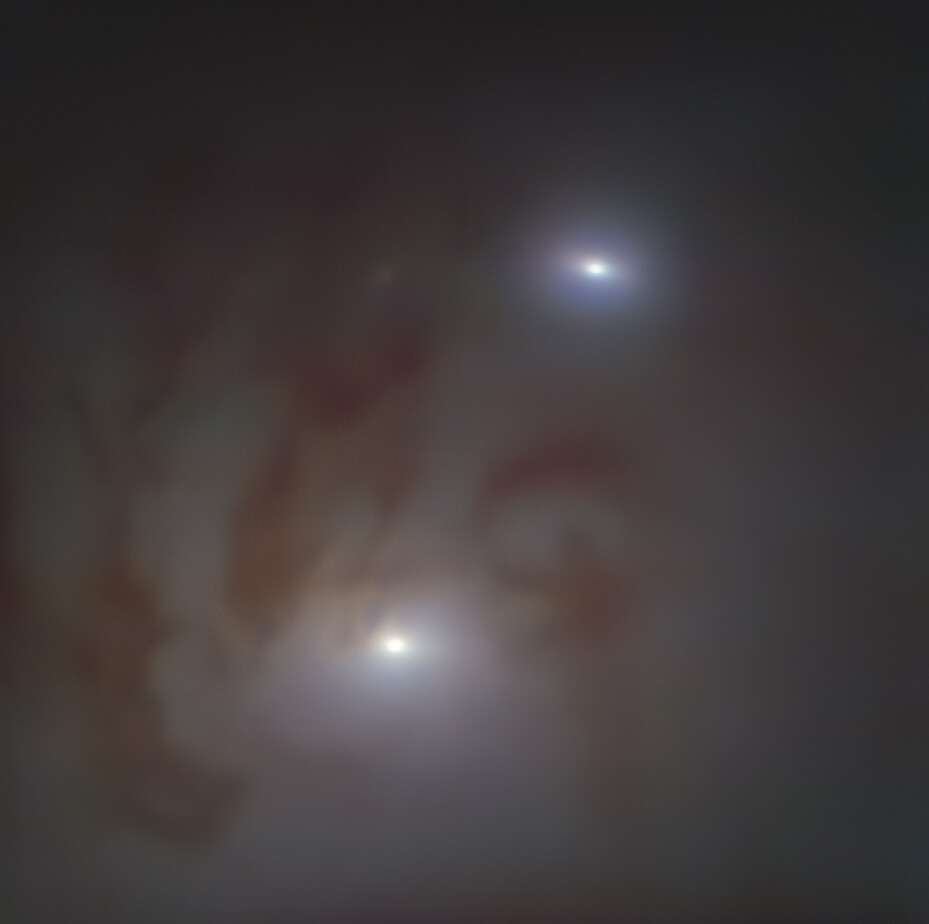The ESO’s Very Large Telescope (VLT) photographed the result of a grand cosmic collision — the galaxy NGC 7727. This giant was born as a result of the merger of two galaxies, which began about a billion years ago. At the center of NGC 7727 is the closest pair of supermassive black holes known to date. In the future, they will merge into an even more massive black hole.

When Galaxies collide
From time to time, galaxies collide with each other. But contrary to popular misconception, individual stars do not crash into each other at the same time — after all, compared to the size of the luminaries, the distances between them are very large. It turns out that the galaxies are more likely to start a “dance”. Their gravity leads to the emergence of tidal forces that dramatically change the appearance of partners circling each other. Stellar tails, gas and dust swirl around both galaxies, and as a result, a new galaxy of a somewhat disordered and asymmetric shape is formed from them.
This is exactly what happened in the case of NGC 7727, which is located at a distance of 89 million light-years from Earth in the direction of the constellation Aquarius. According to astronomers, the merger of the galaxies that formed it began about 1 billion years ago and ended 250 million years ago.

The VLT photo (it was obtained using the FORS2 receiver) demonstrates the twisted “tails” formed during this process: each of the original galaxies tore out dust clouds from another star. This is how the eye-catching long sleeves were formed, covering NGC 7277 from the outside. Parts of these branches are dotted with stars, which in the VLT image look like bright bluish-purple specks.
Closest pair of supermassive black holes to Earth
In the very center of the galaxy, two bright dots are visible in the image. The core of NGC 7727 still consists of two nuclei of the original galaxies, each of which contains a supermassive black hole. This is the closest similar pair to us. The observed distance between black holes is approximately 1,600 light-years. In the future, they will merge into a single object.

Our Milky Way, in the center of which there is also a supermassive black hole, will have a similar merger with the Andromeda galaxy in a few billion years. Perhaps the object that is formed as a result of this event will look somewhat similar to the cosmic dance of NGC 7727. It turns out that the photo obtained by VLT allows us to look into our future.
According to https://www.eso.org
Follow us on Twitter to get the most interesting space news in time
https://twitter.com/ust_magazine
